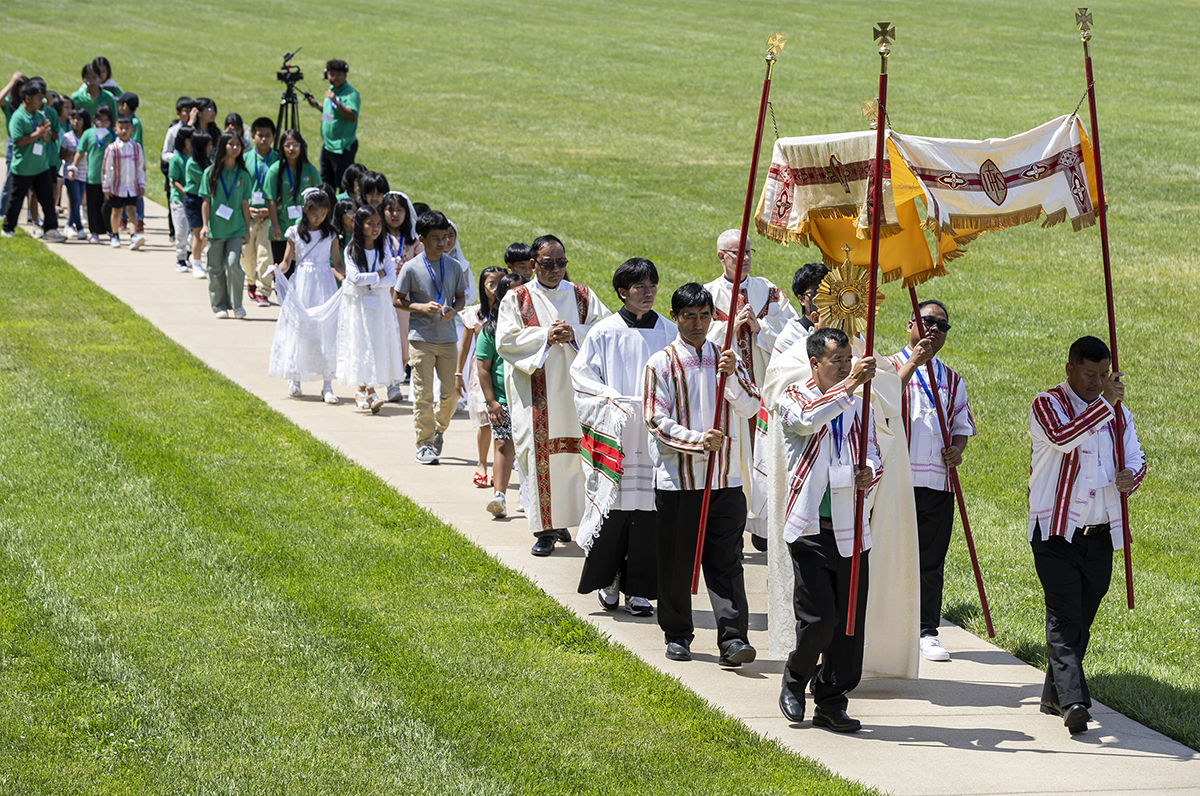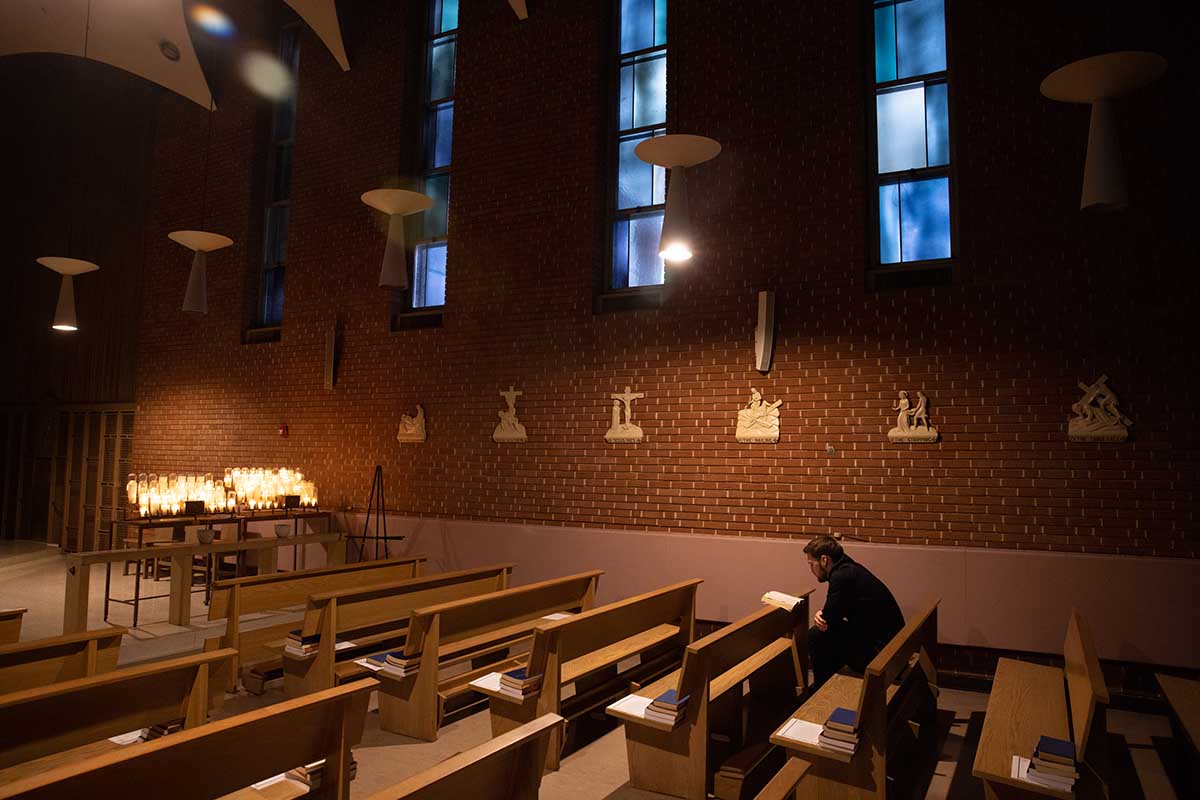St. John Vianney High School students reflect on school’s namesake, whose heart was on display
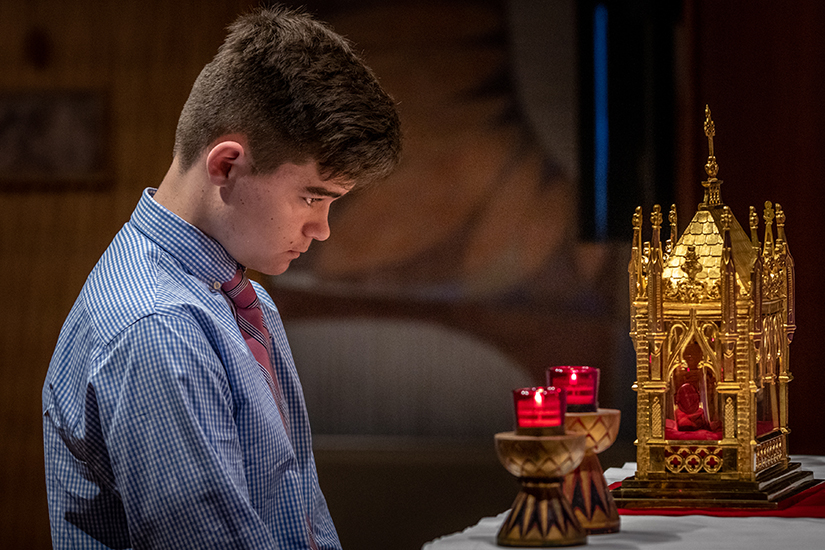
Incorrupt heart of St. John Vianney makes a visit to Marianist high school of same name as part of nationwide relic tour
Lucas Wilson set his alarm for 5 a.m. — an extra half hour early — in anticipation of a special moment. The 14-year-old was going to see the heart of St. John Vianney.
But Lucas’ motivation was not scientific curiosity. After all, it’s not common to see a major first-class relic — a fully intact, incorrupt

heart of a saint. Rather he wanted to pray through the man known as the Curé of Ars, who became known for his ministry a parish priest to the people of Ars, France, leading to a spiritual transformation of the community. Lucas is discerning a vocation to the priesthood.
Lucas and his family were among hundreds of people who viewed the relic at St. John Vianney High School in Kirkwood March 15. It was also hosted at the Cathedral Basilica of Saint Louis as part of a nationwide “Heart of a Priest” relic tour that began November and is sponsored by the Knights of Columbus.
Lucas was once honored with the Cure d’Ars Award for exemplifying priest-like characteristics at a Kenrick-Glennon Days retreat for boys considering the priesthood. “I know he’s the patron saint of parish priests,” Lucas said of St. John Vianney. “When my mom told me about it, I thought, ‘I want to go to that.’”
St. John Vianney’s incorrupt heart is considered a major, first-class relic. Ordained in 1815, he was assigned to a small village of Ars in the Diocese of Lyon, France. The town had mostly abandoned the faith, and the parish had been neglected. His prayer life and devotion to the sacraments made an impression upon the people. He spent hours hearing confessions and was earned a reputation for being able to read souls.
He died in 1859 at the age of 73. Later, when his body was exhumed as part of his cause for canonization, it was discovered that it was incorrupt. His body is now enshrined at the Basilica of Ars, and his heart was placed in a reliquary at the Shrine of the Curé’s Heart in Ars. Pope Pius XI canonized him on May 31, 1925, and became known as the patron of parish priests. His feast day is celebrated Aug. 4.

The relic had made an appearance at the U.S. Conference of Catholic Bishops’ fall meeting and the Knights of Columbus’ supreme convention, both in Baltimore last year. Supreme Knight Carl Anderson made arrangements for the relic to be taken on a nationwide pilgrimage “to pray for priests, to pray for bishops, to pray for renewal in the Church,” said Peter Sonski, one of three custodians of the relic and education and outreach director of the Knights of Columbus Museum in New Haven, Conn. “John Vianney had a grace to read souls, to help people identify their sins, their faults … and to renew themselves in holiness and grace.”
Vianney senior Andrew Chapman thought the relic “was pretty awesome.” St. John Vianney is a reminder for the school community to promote “a humble atmosphere of brotherhood” through “faith and humility.”
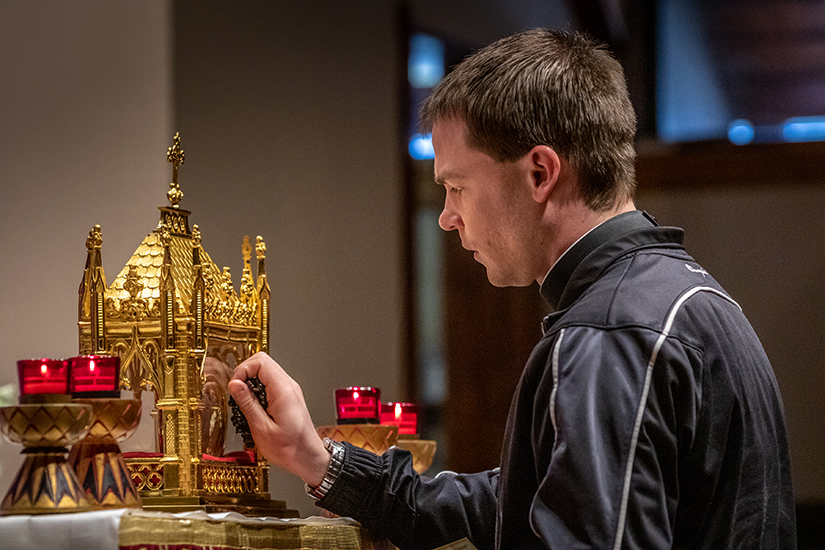
Vianney senior Grant Atwood said it was “a pretty cool thing” to have the heart of their school’s namesake come all the way from France. He also admires that St. John Vianney grew up during the French Revolution — a time when he could have easily been put to death for practicing the faith.
The saint “personifies what it means to be a Vianney student; to go out in the world and profess the faith, and also be willing to take risks so you can spread the Good News of God,” Atwood said.
Vianney president Mike Loyet described the Cure of Ars as a great role model for students. “We can learn so many lessons from him,” he said. “It ties in so well with our Marian charism — the humility, the willingness to take a risk, the whole idea of forgiveness. We think he’s an awesome saint.
St. John Vianney
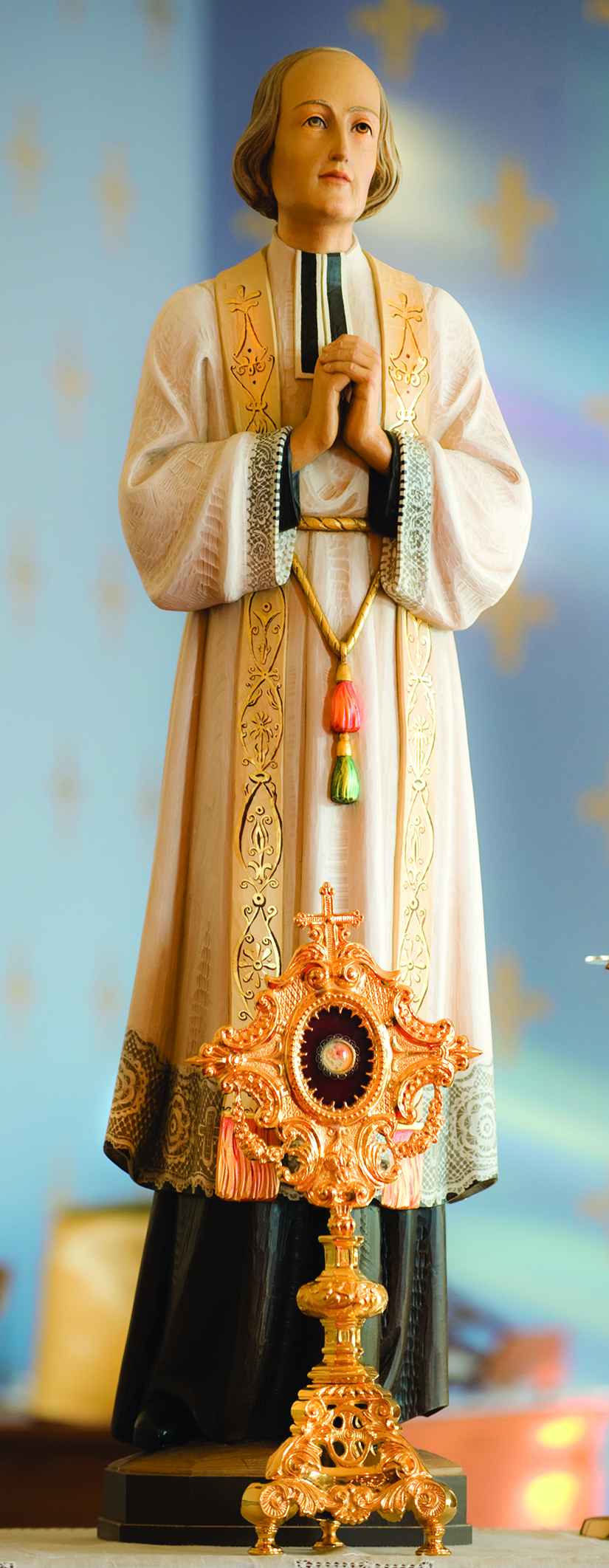
St. John Vianney, popularly known as the Curé of Ars (French for “priest of Ars”), is considered a model of priestly generosity, purity and prayerfulness. Born in France in 1786, St. John Vianney grew up in a time of open hostility to the Church in the wake
What is a relic?
In Catholic tradition, a relic is a physical object associated with a saint that may be offered to the faithful for veneration. Relics and saint aren’t to be worshipped. They are venerated as holy objects in recognition of the fact that God has worked through the saint. A major or first-class relic is defined as a part of the saint’s body, as opposed to something that the saint touched or wore. The term incorrupt refers to a human body that has avoided the normal process of decomposition after death. It is a sign — but not proof — of the person’s holiness, and is sometimes seen in Catholic saints and those in the process of canonization.
Lucas Wilson set his alarm for 5 a.m. — an extra half hour early — in anticipation of a special moment. The 14-year-old was going to see the heart of … St. John Vianney High School students reflect on school’s namesake, whose heart was on display
Subscribe to Read All St. Louis Review Stories
All readers receive 5 stories to read free per month. After that, readers will need to be logged in.
If you are currently receive the St. Louis Review at your home or office, please send your name and address (and subscriber id if you know it) to subscriptions@stlouisreview.com to get your login information.
If you are not currently a subscriber to the St. Louis Review, please contact subscriptions@stlouisreview.com for information on how to subscribe.





